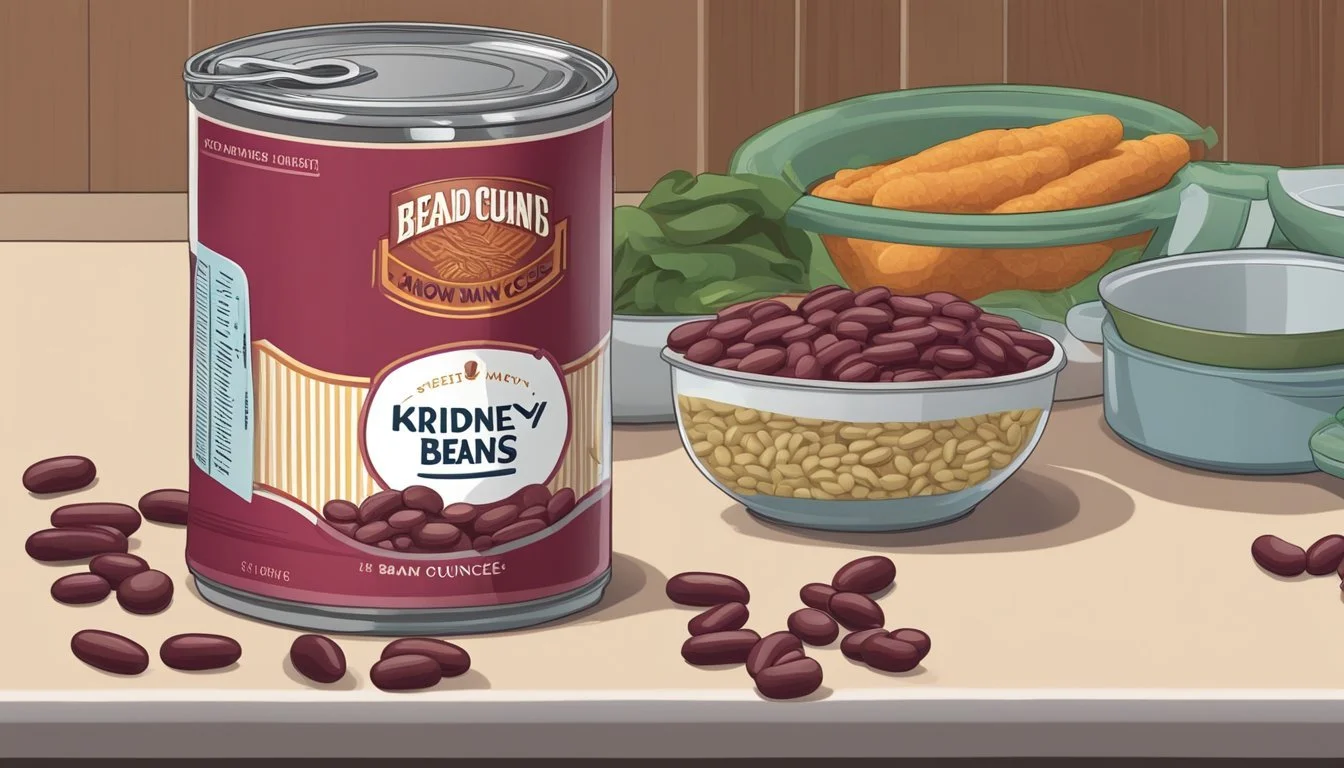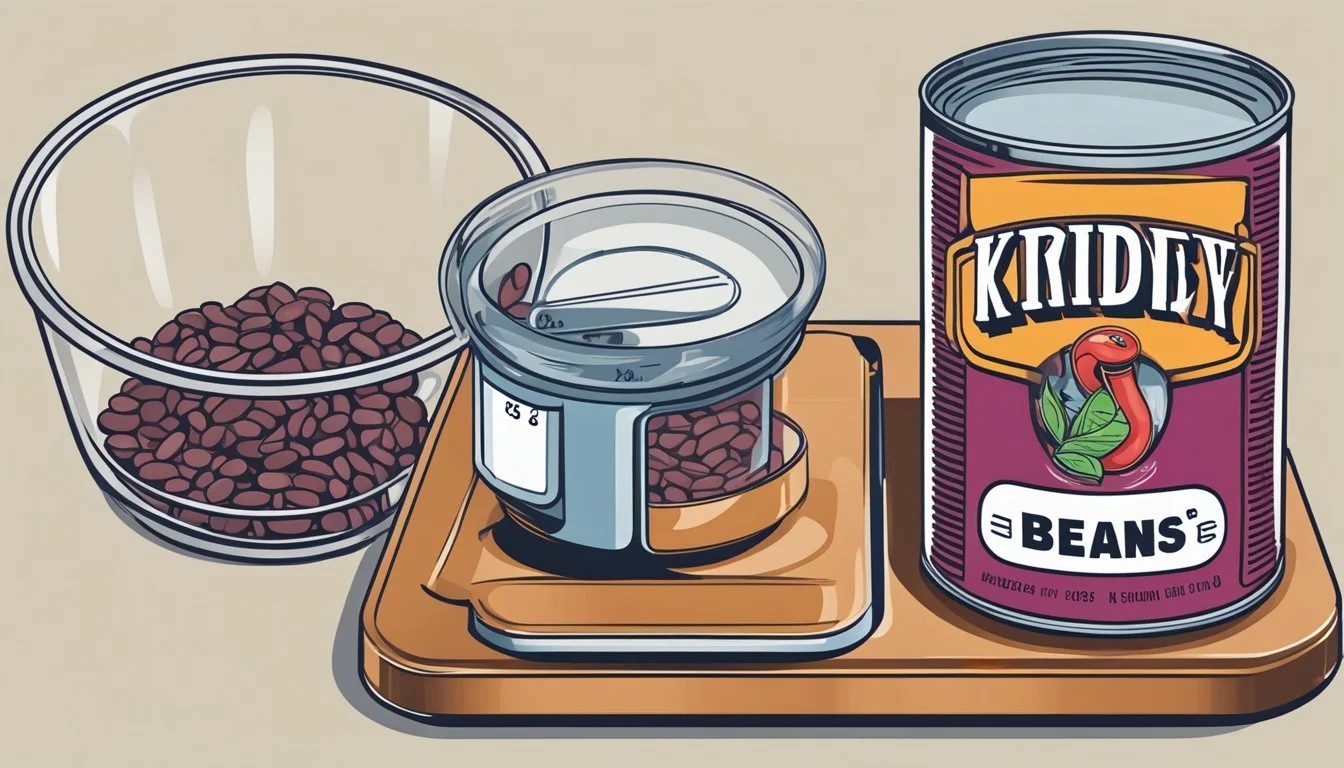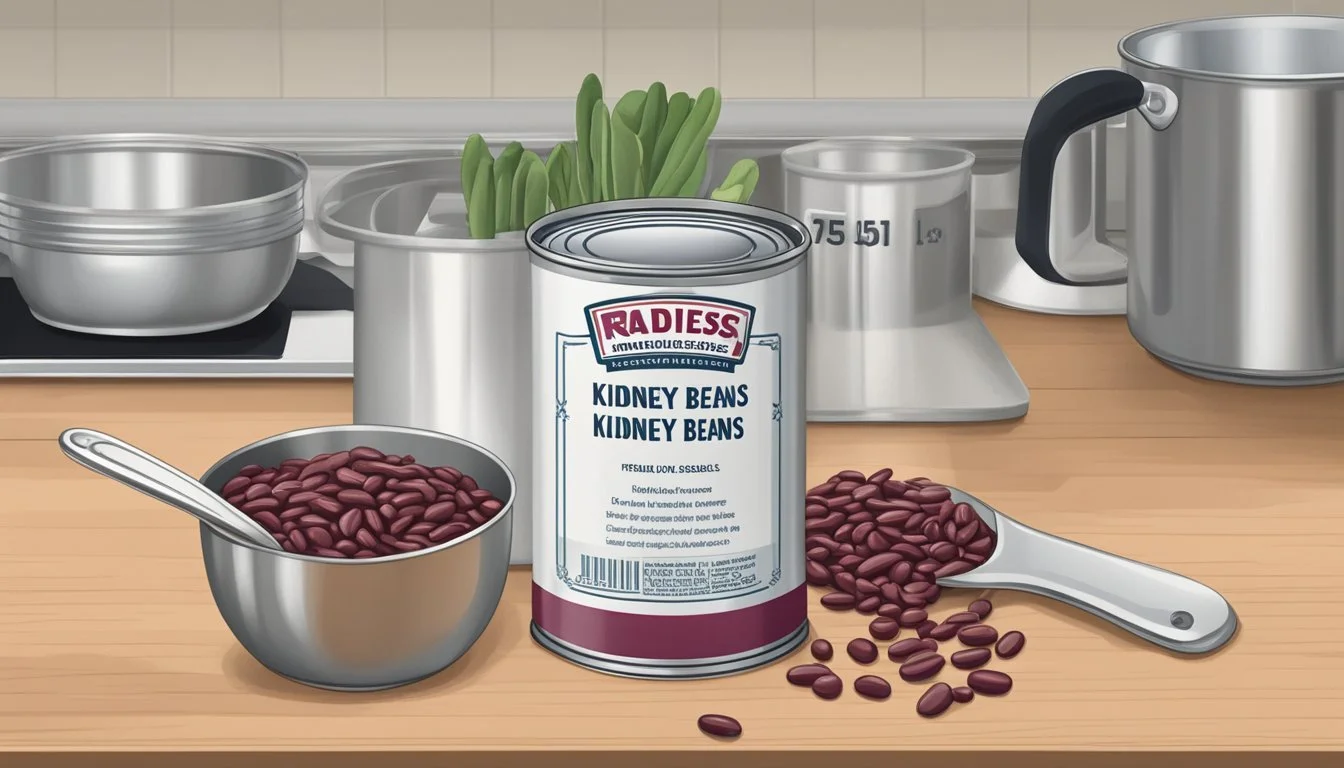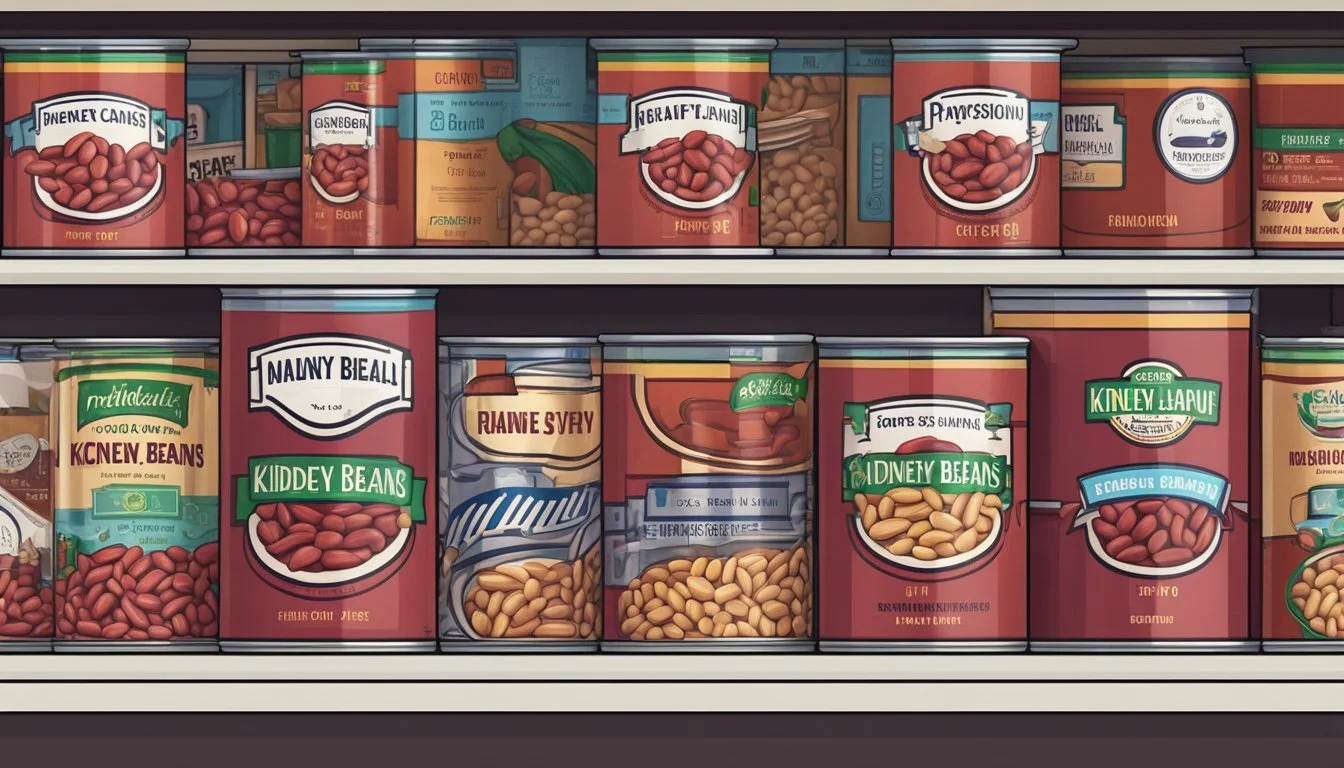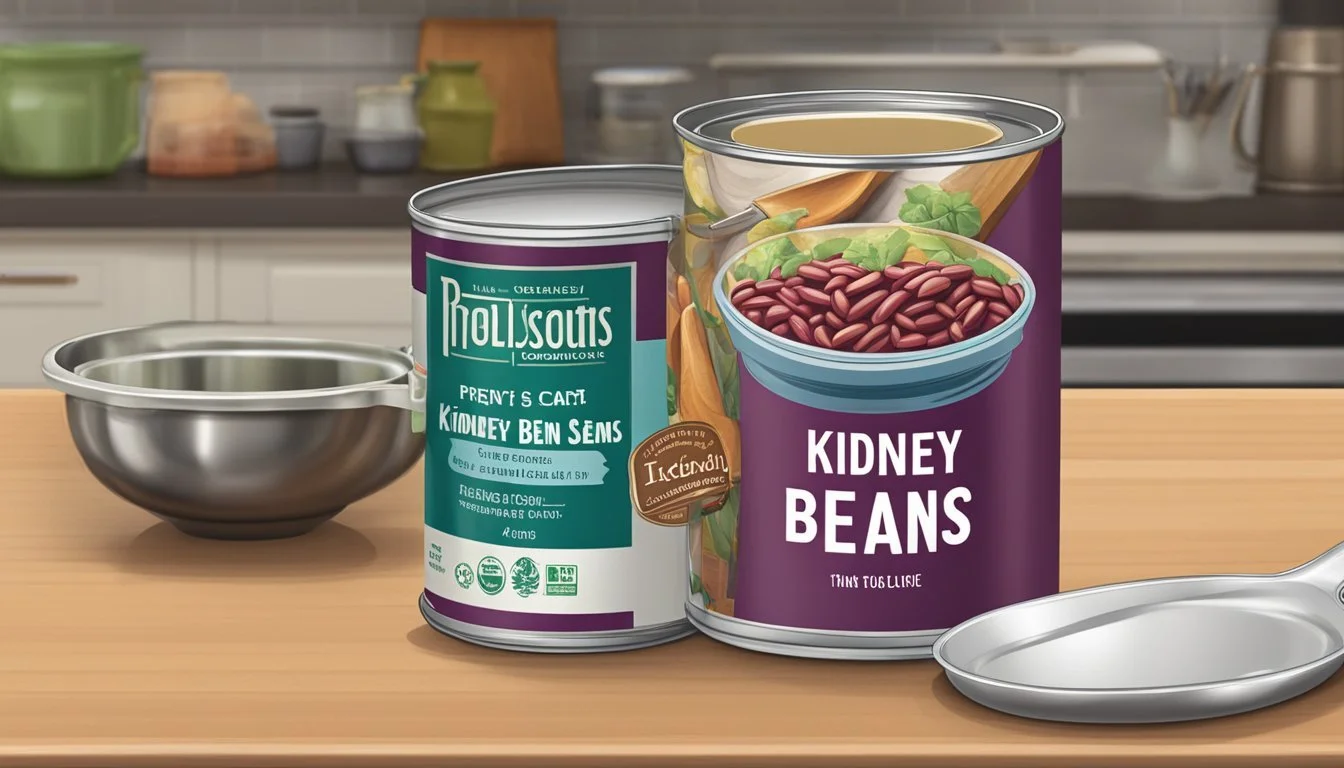How Many Ounces in a Can of Kidney Beans
Know Your Measurements
When purchasing cans of kidney beans at the grocery store, consumers often find them in standard 15-ounce cans. This sizing is consistent across many brands and is frequently used in recipes that call for canned beans. The weight indicated on the can is the total weight, which includes the beans and the liquid they are packed in. Once the beans are drained of excess liquid, the remaining weight is primarily the beans themselves.
Although the total weight of the can is 15 ounces, the actual weight of the kidney beans inside can vary slightly. Typically, after draining, one can expect to have around 9 to 10 ounces of beans, which generally equates to approximately 1 to 1.5 cups. This is a practical amount for integrating into various recipes, whether it's for soups, salads, or as a protein source in vegetarian dishes (What wine goes well with vegetarian dishes?).
Understanding the exact amount of kidney beans in a can aids in recipe accuracy and portion control. For precise culinary ventures or dietary considerations, knowing the drained weight of kidney beans is important, as this is the form most often utilized in cooking. It's also useful for those looking to substitute dried beans for canned, as conversions can be made based on the drained weight.
Understanding Can Sizes
When discussing the size of cans, one must distinguish between volume and weight, as these are different measures. Typically, can sizes are expressed in terms of fluid ounces, a measure of volume. For instance, a common size for a can of kidney beans is 15 fluid ounces. This can size doesn't include the weight of the beans; instead, it indicates the volume of space that the contents occupy.
Cans come in various standard sizes, which can sometimes be referred to by number rather than volume. For example, a No. 5 can holds a volume equivalent to approximately 56 fluid ounces or around 7 cups, fitting neatly between the quart and half-gallon measurements. There is, however, no standardized size for a No. 5 can, so consumers should always check the label for exact measurements.
Other common can sizes include:
No. 1 Picnic: Typically around 11 ounces
No. 300: Around 14 to 16 ounces
No. 303: Approximately 16 to 17 ounces, which is near 2 cups
No. 2: About 20 ounces or 2 ½ cups
Jars, including jelly jars and larger containers, also hold various measurements and are usually categorized by volume too. For example, a half-pint jelly jar contains 8 fluid ounces, whereas a half-gallon jar holds 64 fluid ounces, both conforming to standard United States liquid measurements.
It's important to note that while fluid ounces are a measure of volume typically used for liquids, it is also applied to measure the volume of solids contained in cans and jars for consistency in the packaging industry.
Nutritional Profile of Kidney Beans
Kidney beans offer a rich nutritional profile essential to a healthy diet. They provide a significant amount of protein and fiber, while being low in fat and sodium compared to many processed foods.
Protein Content
Kidney beans are an excellent source of plant-based protein, crucial for muscle growth and repair. A standard serving of 100 grams of boiled kidney beans contains approximately 8.7 grams of protein. This makes them a great choice for vegetarians and vegans looking to increase their protein intake.
Fiber and Fat
A standout feature of kidney beans is their high dietary fiber content, which aids in digestion and can help maintain healthy cholesterol levels. The same 100-gram serving boasts around 6.4 grams of dietary fiber. In terms of fat, kidney beans contain a low amount, with a 15-ounce can yielding about 1.5 grams of total fat.
Sodium Levels
Canned kidney beans contain sodium for preservation, but the levels can be managed by draining and rinsing the beans. A drained and rinsed 15-ounce can typically contains a reduced sodium content. However, for those monitoring their sodium intake, cooking dried kidney beans is a lower-sodium alternative.
Legume Family Comparison
Within the legume family, kidney beans hold their own in nutritional value. They provide more protein and fiber than many other legumes, such as green peas and black-eyed peas. However, they have comparable protein levels to chickpeas, pinto beans, and black beans. Kidney beans generally contain less protein per serving than soybeans but exceed in fiber content when compared with lima beans, navy beans, and great northern beans.
Converting Weights and Volumes
When cooking or baking, it's essential to understand how to convert weights and volumes, especially when using canned goods like kidney beans. Precise conversions ensure accurate measurements and can affect the outcome of a recipe.
Ounces to Cups
A typical can of kidney beans weighs approximately 15 fluid ounces, but when drained of liquid, the beans themselves usually measure around 9 ounces in weight, which equates to about 1.5 cups of cooked beans. Here is a basic conversion:
Drained Weight: 9 ounces
Volume: 1.5 cups
Pounds to Grams
Weights can also be converted between imperial and metric systems. One pound (lb) is equivalent to 454 grams (g). In comparison, a 15-ounce can of kidney beans, once drained, weighs about 9 ounces which translates to approximately 255 grams.
1 pound: 454 grams
9 ounces: 255 grams
Metric Equivalents
Understanding metric equivalents is useful for those who follow recipes using metric measurements. Volume measurements like cups can be converted to milliliters (mL) and grams. Here's a quick guide:
1 cup: about 240 mL or 240 grams of water (note: the weight in grams of 1 cup of a substance may vary based on the density of the substance)
1 fluid ounce: about 30 mL
For solid ingredients like kidney beans, volume-to-weight conversions will differ due to the ingredient's density, therefore, it's important to refer to specific conversions for each ingredient.
Cooking and Preparation
Cooking and preparation of kidney beans, whether canned or dried, are essential steps for incorporating these nutritious legumes into meals. Proper methods enhance their flavor and ensure they are safe and enjoyable to eat.
Soaking Dried Beans
Before cooking, dried kidney beans require soaking, which can be done through two main methods:
Standard Soak: Soak beans in a large pot of water for at least 8 hours or overnight. Typically, for every cup of beans, one should use three cups of water.
Quick Soak: Boil beans in a large pot of water for 2-3 minutes, then remove from heat, cover, and let stand for 1 hour.
Soaking lessens cooking times and helps to remove some of the indigestible sugars that cause gas.
Cooking Dried Beans
Once soaked, it is time to cook the dried beans.
Drain the beans from the soaking liquid and rinse them thoroughly.
Transfer the beans to a large pot, cover with fresh water, and bring to a boil.
Reduce the heat and simmer until tender, which can take anywhere from 1 to 2 hours.
Salt and seasonings can be added towards the end of the cooking process to prevent toughening the beans.
Canned Beans: Drained and Cooked
Canned kidney beans are a convenient alternative to dried beans as they are pre-cooked and ready to use after heating. However, it is advisable to drain and rinse them before use to remove excess sodium and the starchy liquid they are stored in, which some individuals may find affects the taste or digestibility.
To heat the beans, simply:
Drain the excess liquid from the can and rinse the beans under cold water.
Transfer beans to a pot and cover with water or broth.
Heat on the stove over medium heat for about 10-15 minutes or until thoroughly warmed.
These beans can be used immediately in a variety of dishes, from salads to hearty stews (What wine goes well with stews?).
Recipes and Usage
Canned kidney beans are convenient and versatile, featuring predominantly in a variety of dishes from salads to stews. They offer a high-protein ingredient option for many recipes that cater to different dietary needs.
Bean Salad Recipes
Bean salads are a refreshing option for health-conscious individuals. A typical bean salad recipe might include a 15-ounce can of kidney beans, drained and rinsed, mixed with chopped vegetables, such as bell peppers and onions, and tossed in a vinaigrette dressing. For example, a Mediterranean bean salad often incorporates feta cheese and olives, while a Southwest bean salad could include corn, cilantro, and a lime juice dressing.
Ingredients:
1 can kidney beans, drained and rinsed
Chopped vegetables (e.g., bell peppers, onions)
Dressing (vinaigrette, lime juice, etc.)
Chili and Stew Recipes
Kidney beans are a staple in chili and stew recipes due to their meaty texture and ability to absorb flavors well. A classic chili recipe might use kidney beans along with ground beef or turkey, tomatoes, chili powder, and cumin. Stews can also benefit from the beans' hearty texture, with a common recipe encompassing slow-cooked kidney beans with vegetables and spices, sometimes featuring meat or a meat substitute.
Ingredients:
1 can kidney beans
Ground meat or substitute
Spices (chili powder, cumin, etc.)
Tomatoes and various vegetables
Vegan and Vegetarian Options
For vegan and vegetarian diets, kidney beans serve as a key protein component. They can be used in vegan chilis by replacing meat with additional vegetables, grains, or meat substitutes. Vegetarian recipes often combine kidney beans with quinoa or rice to create a complete protein, while vegan options focus on using plant-based ingredients such as tofu or tempeh.
Ingredients:
1 can kidney beans
Plant-based protein (tofu, tempeh)
Grains (quinoa, rice) for complete protein
Packaging and Storage
Choosing the correct packaging and implementing proper storage techniques are essential to maintain the quality and longevity of canned kidney beans.
Cans and Jars
Kidney beans are typically found in metal cans, but may also be available in glass jars. Cans provide a hermetic seal that prevents oxygen and light from degrading the beans, while jars have the advantage of being transparent, allowing one to visually inspect the contents without opening.
Dry and Cool Storage
Both cans and jars of kidney beans should be stored in a dry and cool place. Exposure to excessive moisture can lead to rust on metal cans or compromise the seal on jars. A cool environment helps in maintaining the integrity of the beans by slowing down any potential degradation process.
Shelf Life Considerations
The shelf life of canned kidney beans can extend up to 3-5 years if unopened. Shelf life can vary based on storage conditions and the presence of preservatives. Once opened, kidney beans should be transferred to an airtight container and refrigerated, where they can last for several days.
Container Type Expected Shelf Life Unopened Cans 3-5 years Opened Cans 3-4 days (refrigerated) Glass Jars 3-5 years (depends on seal integrity)
Yield and Servings
Understanding the yield and servings of kidney beans is essential whether one is planning meals or calculating ingredients for a recipe. Canned beans provide convenience, while dried beans yield larger quantities post-cooking.
Yields from Dried Beans
One pound of dried kidney beans typically results in about 6 cups of cooked beans when prepared. This yield can vary slightly depending on the specific type of kidney bean and preparation method. Dried beans expand significantly during the cooking process; therefore, a heaping 1/2 cup of dried beans equates to roughly one 15-ounce can of cooked beans.
Servings Per Can
A 15-ounce can of kidney beans typically holds about 1 to 1.75 cups of beans once drained. This translates to approximately 3.5 servings, with a single serving being defined as 1/2 cup of cooked beans. Can sizes can vary, affecting the number of servings; larger cans will contain more servings, whereas smaller cans will contain fewer.
Portion Control
When considering portion control, it is essential to note that a single serving size is generally considered to be 1/2 cup of cooked or canned kidney beans. This measure is a helpful guide for meal planning and ensures appropriate portion sizes in both individual meals and recipes that call for kidney beans.
Economic and Brand Considerations
When examining canned kidney beans from an economic and brand perspective, consumers should consider cost efficiency, brand offerings, and strategies for purchasing in bulk.
Cost Comparison
Canned kidney beans are available in various sizes, typically ranging from a small 8-ounce can to a large 1-quart can. The average 15-ounce can will cost between $1 to $2, depending on the brand and where it's purchased. For a ½ litre (1 US pint) or approximately 16 ounces, the costs slightly increase, whereas a 1 litre (1 US quart) option can offer more beans for the money spent, potentially providing better value.
Brand Variations
Different brands may offer their kidney beans in various can sizes and quantities, with a direct influence on the price per ounce. Some brands may include organic or non-GMO beans, which typically reflect in a higher price. Additionally, premium brands may incorporate seasoning or other enhancements, further affecting the cost.
Brand A: 15-ounce can - $1.50 (Standard)
Brand B: 15-ounce can - $1.80 (Organic)
Brand C: 1-quart can - $3.50 (Seasoned)
Bulk Buying Tips
Purchasers seeking economic advantages often buy kidney beans in bulk. When opting to buy larger quantities, it is essential to compare the cost per ounce across brands and quantities to secure the optimal purchase. Consumers might consider buying a larger can if it decreases the cost per ounce, but storage and consumption rates need to be evaluated to prevent wastage.
Buy a 1-quart can rather than two 15-ounce cans if it costs less per ounce and meets storage capacities.
Seek out bulk discounts or wholesale pricing at club stores for long-term savings.
When examining the cost-effectiveness of bulk, consider the shelf life and usage rate to avoid unnecessary waste.
Miscellaneous Tips and Tricks
This section offers practical advice for utilizing canned kidney beans, from cooking shortcuts to novel applications and nutritional enhancements.
Cooking Shortcuts
Quick preparation methods can save time and effort. One can avoid the lengthy process of soaking and cooking dry beans by opting for canned kidney beans, which are pre-cooked and ready to use. For a fast meal, they can be rinsed and added directly to soups, stews, or chili. One can also heat them with seasonings for a simple side dish. For recipes calling for refried beans, simply mash canned kidney beans and incorporate ingredients like garlic and spices for a quick homemade version.
Alternative Uses
Canned kidney beans are not limited to traditional dishes; they can be repurposed creatively in the kitchen. For instance, they can be blended to make bean dips or hummus, providing a creamy texture and protein-rich base. Additionally, when baking, one can substitute bean purée for fats like butter; this is similar to using condensed milk or evaporated milk but offers a lower-fat option. This substitution works particularly well in brownies or dense cakes.
Nutrition Boosting
Kidney beans are nutrient-dense, offering a simple way to increase the nutritional value of meals. Incorporating them into one's diet can boost intake of fiber, protein, and essential minerals like iron and potassium. To enhance the nutritional content of baked goods, one can include kidney bean purée as part of the recipe. When making homemade spreads or dips, such as hummus, adding kidney beans increases both the protein content and the creaminess of the dish without the need for additional oils or fats.


